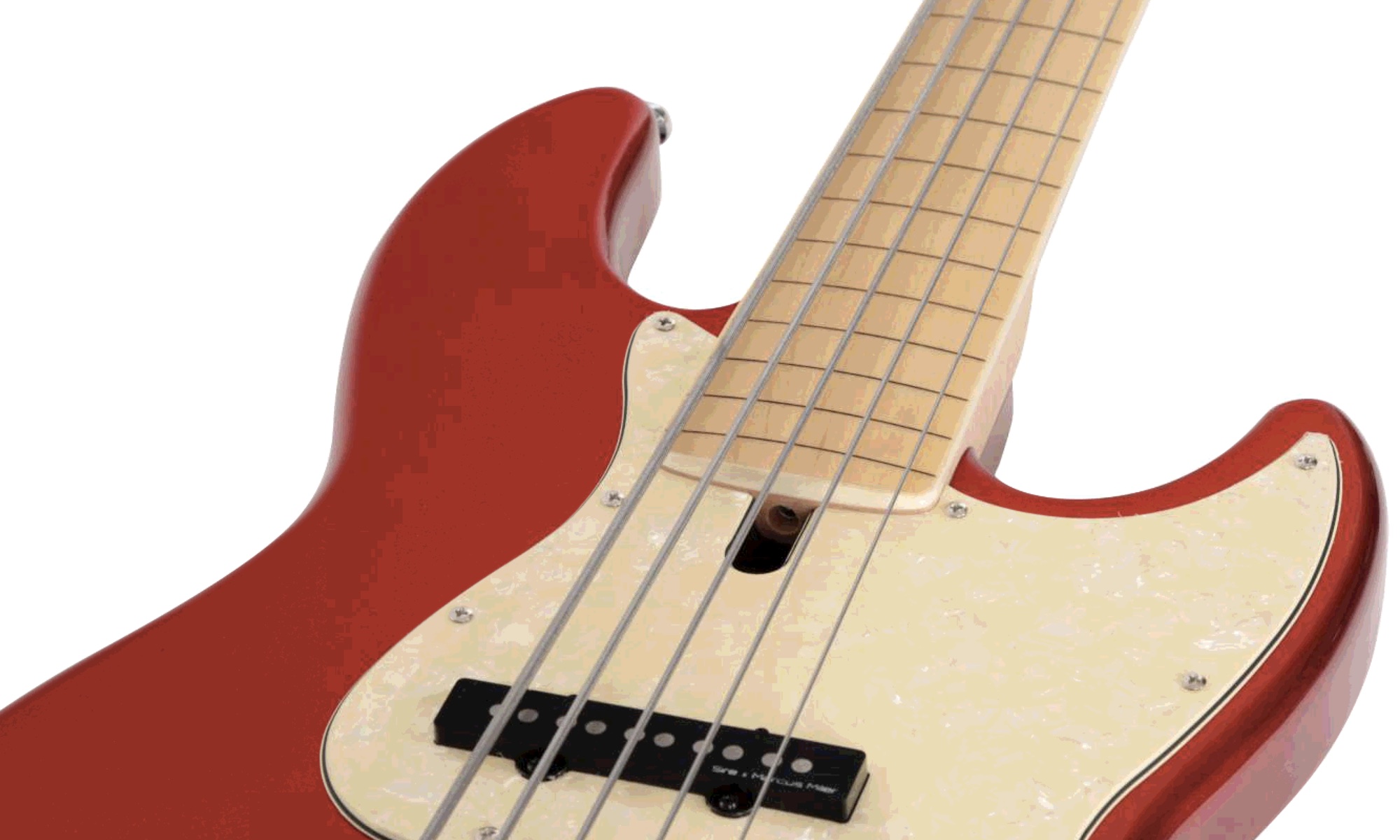- What is a Fretless Bass?
- How do you play a Fretless Bass?
- Why should I use a Fretless Bass?
- What does a Fretless Bass sound like?
- Which strings should be used on a Fretless Bass?
- Which players use Fretless Basses?
- Which brands make Fretless Basses?
Some musicians believe that a bass cannot be played as expressively as a guitar. The less strings that a bass typically has might make it feel more limited to perform with, or perhaps its lower range doesn’t allow melodies to sing as clearly as those produced from a higher-pitched guitar. However, they couldn’t be more wrong – especially when it comes to a fretless bass.
Known for their smooth vocal-like tone and demanding a peculiar technical approach, fretless basses are perfect for bassists who are keen to expand their playing horizons. Used by some of the biggest names in the bass world, fretless basses are experiencing a resurgence. And we’re going to reveal why adding one to your setup is a must!
What is a Fretless Bass?
In its simplest form, a fretless bass guitar does not feature any frets. It is therefore akin to a traditional double bass, whereby the notes on its fingerboard are intonated by the fingers. This is different to a conventional bass guitar, which is installed with metal frets that intonate the instrument in order to accurately produce notes from the chromatic scale when fretted.
You’ll find that most fretless electric bass guitars look just like their fretted counterparts. They often come equipped with the electronics you’d expect from a standard bass, and are constructed from customary tonewoods. The only notable difference you’ll observe is obviously the lack of frets on a fretless bass. This means that its fingerboard is typically left blank and will not sport position inlays. However, some fretless basses can have faint lines painted onto their fingerboards to indicate fret placement for accurate note pitching:

How do you play a Fretless Bass?
Players who are keen to take the plunge into the fretless world will probably ponder this question the most: “is it hard to play a fretless bass?” Ultimately, the answer is no. All it takes is some slight adjustment to your playing technique, and of course practice, in order to become proficient on a fretless bass.
As briefly mentioned before, the notes on a fretless bass are intonated by the fingers on your fretting hand. So whereas a fretted bass requires you to simply press a string down onto a fret to produce an intonated note, on a fretless bass you must press the string down onto the fingerboard and ensure that your fretting finger is placed in a position where a fret would typically be. Therefore, the action of pushing a string down towards the fingerboard is much the same. But on a fretless bass, you are also responsible for making sure that notes sound in tune.
Fretless basses can be played using common right-hand techniques. Most bassists will use their fingers, as that playing style lends itself well to a fretless bass’ famously warm tone. But can you slap on a fretless bass? Yes, you can! Slapping on a fretless bass is achievable, despite what some people say online. However, as slapping is typically used for fast and intricate lines, it can be difficult to precisely intonate notes with your fretting hand. Les Claypool is a famous fretless slapper, and a great example of his eccentric playing can be heard in Primus’ “Tommy The Cat”:





Responses & Questions